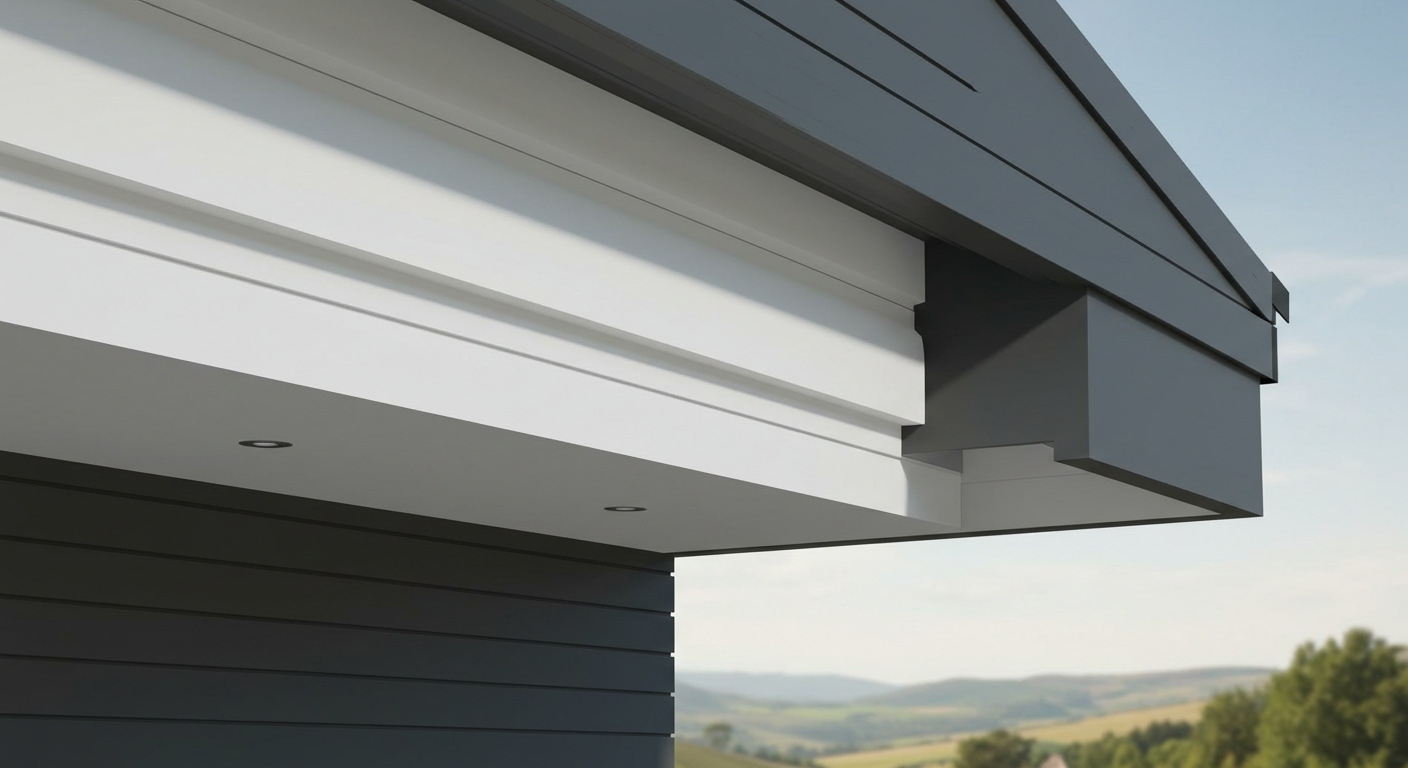When it comes to maintaining your home’s exterior, few elements are as overlooked—but as critical—as your soffit and fascia. These components might not be top of mind during your renovation plans, but they quietly perform vital tasks in protecting your roof, supporting your gutters, and ensuring proper ventilation in your attic. When issues arise with either one, they can quickly lead to bigger complications.
Wood Rot and Its Effects
One of the most prevalent issues associated with older soffit and fascia boards is wood rot, particularly in structures built with untreated or poorly maintained wood. The primary cause of this decay is moisture, which can infiltrate from rain, snow, or poorly functioning gutters that allow water to accumulate against the roofline. Over time, this leads to significant structural damage.
Indicators of wood rot include:
- Peeling paint
- Soft or crumbling areas
- Dark spots on the surface
- Sagging sections of fascia or soffit
Pest Intrusion through Damaged Soffits and Fascia
Pests are naturally drawn to weakened areas in your home’s exterior. Damaged soffit and fascia boards can act as open invitations for unwelcome critters like birds, squirrels, raccoons, wasps, and even bats. Once these pests gain access to your attic, they can cause serious damage: chewing through insulation, nesting in vents, and even gnawing on electrical wiring.
To prevent achieving pest infestations, it is crucial to perform regular inspections, especially during spring and fall. During these checks, be on the lookout for:
- Gnaw marks or damage
- Droppings and nesting materials
- Cracks or holes
Immediately repairing any identified gaps and sealing them with caulking or pest-resistant mesh can help keep your home pest-free. If there are existing infestations, consulting a pest control expert may be necessary before proceeding with damage repairs.
Poor Ventilation: A Hidden Problem for Attics
While the soffit’s intended purpose is to allow fresh air into your attic, factors like blockages or improper installation can significantly restrict airflow. This leads to a myriad of ventilation issues, particularly during extreme weather conditions. For example, the summer heat can bake your attic, raising cooling bills and degrading roofing materials, while humidity during colder months can promote condensation and mould growth.
Potential solutions to these ventilation problems include:
- Cleaning out obstructed vents
- Installing additional vented soffit panels
- Upgrading to a modern ventilation system to foster continuous airflow
Warping, Cracking, and Weathering Issues
Extreme weather fluctuations, subpar-quality materials, and exposure to ultraviolet rays can contribute to the warping or cracking of soffit and fascia boards over time. This not only detracts from the aesthetic appeal of your home but also jeopardizes its structural integrity by allowing moisture and pests to enter.
Warping and cracking can manifest differently. Widespread damage necessitates a more comprehensive approach, which might include the replacement of entire sections. In contrast, localized damage might only require isolated panel replacements. When contemplating repairs, opt for durable, weather-resistant materials, to prevent these issues from recurring.
Additionally, always check that your gutters are functioning adequately. A well-maintained gutter system is integral to preventing water-related damage to your soffit and fascia.
Addressing Gutter Damage Impacts on Soffit and Fascia
Your gutters are intrinsically linked to the condition of your soffit and fascia. When gutters fail, the repercussions often cascade down to these components, creating a chain reaction of problems. For example, sagging, overflowing, or detached gutters can pull on the fascia board, leading to water seeping behind it and resulting in rotting or mould growth in the soffit.
To mitigate these issues, regular maintenance of your gutters is paramount. Here are essential steps for effective gutter maintenance:
- Clean gutters at least twice a year, especially after the leaves fall.
- Ensure gutters are securely fastened and slope adequately to direct water away from the roof.
- Inspect for signs of wear at the roof edge to identify early signs of damage.
It is wise to enlist a professional for an inspection to assess the conditions of your soffit and fascia. Roofers or siding contractors can evaluate the situation and provide cost estimates, as well as recommend materials that promise a longer lifespan with reduced maintenance.
